
Handy Links
SLAC News Center
SLAC Today
- Subscribe
- Archives: Feb 2006-May 20, 2011
- Archives: May 23, 2011 and later
- Submit Feedback or Story Ideas
- About SLAC Today
SLAC News
Lab News
- Interactions
- Lightsources.org
- ILC NewsLine
- Int'l Science Grid This Week
- Fermilab Today
- Berkeley Lab News
- @brookhaven TODAY
- DOE Pulse
- CERN Courier
- DESY inForm
- US / LHC
SLAC Links
- Emergency
- Safety
- Policy Repository
- Site Entry Form

- Site Maps
- M & O Review
- Computing Status & Calendar
- SLAC Colloquium
- SLACspeak
- SLACspace
- SLAC Logo
- Café Menu
- Flea Market
- Web E-mail
- Marguerite Shuttle
- Discount Commuter Passes
-
Award Reporting Form
- SPIRES
- SciDoc
- Activity Groups
- Library
Stanford
Around the Bay
Staff LCLS Tour
More than 500 lab employees signed up for a firsthand look at the newly constructed facilities for the Linac Coherent Light Source during last Thursday's LCLS tour.
Tours began in the Beam Transport Hall, where electrons from the linac will enter the machine. Participants proceeded through the Undulator Hall, home to a series of 33 magnets that will jostle the electrons so that they emit X-rays. The next stop was the Beam Dump, where the electrons will be separated from the X-rays and carefully discarded. The 3/4-mile walk finished with the Near and Far Experimental Halls that will house the X-ray laser's scientific instrumentation. A 200-meter X-ray Tunnel separates the Near Experimental Hall from the Far Experimental Hall. Each hall contains three experimental stations, in separate shielded hutches. Some experiments, such as those using lower-energy X-rays, benefit from being near to the X-ray source, while others, such as those exploiting the coherence of the LCLS X-ray pulses, benefit from being farther away. The Near and Far Halls will enable a full range of experiments.
Each stop along the tour included explanations and question-and-answer time with engineers, designers and scientists from the LCLS and LCLS Ultrafast Scientific Instruments teams—including visiting LCLS colleagues from Argonne National Laboratory. The guides expressed their excitement over the progress on this huge machine, with the first injector-to-dump electron beam expected this winter, and "first light" X-rays as early as mid-2009.
For a bird's-eye view, see this interactive map of the LCLS.
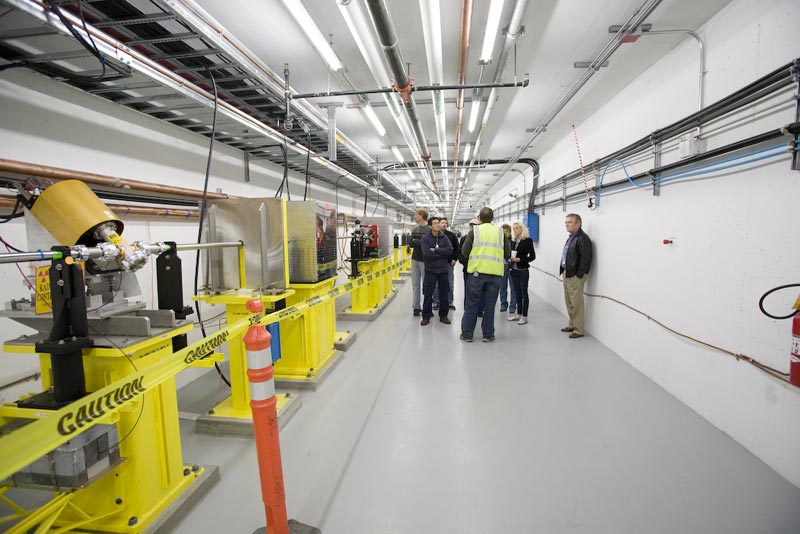
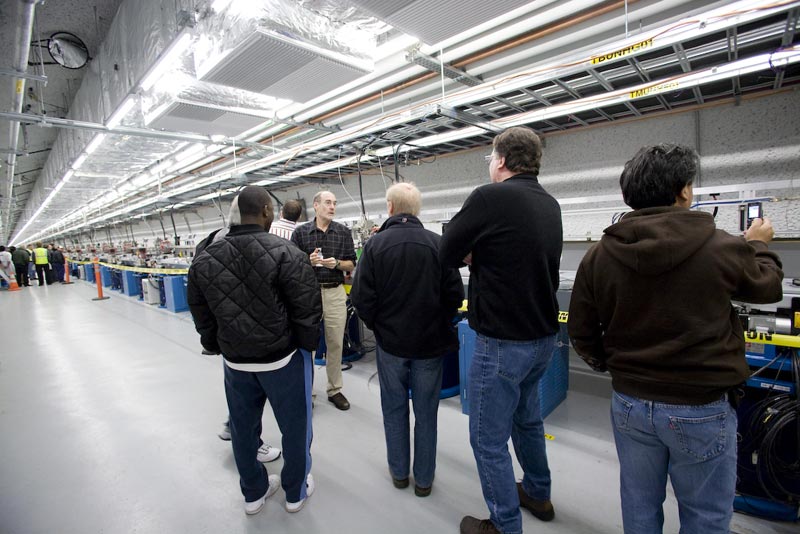
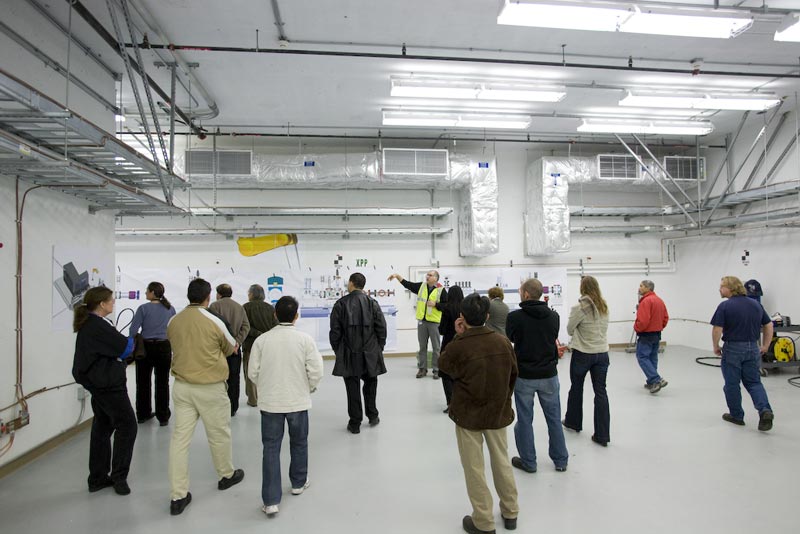
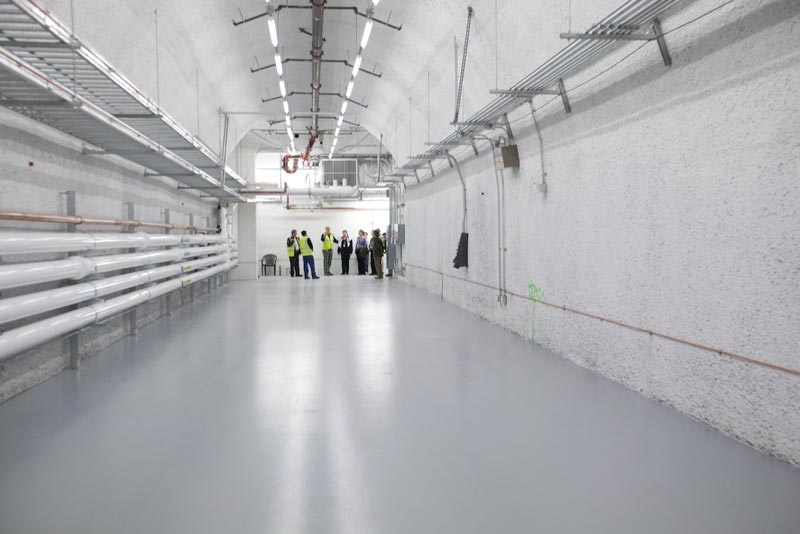
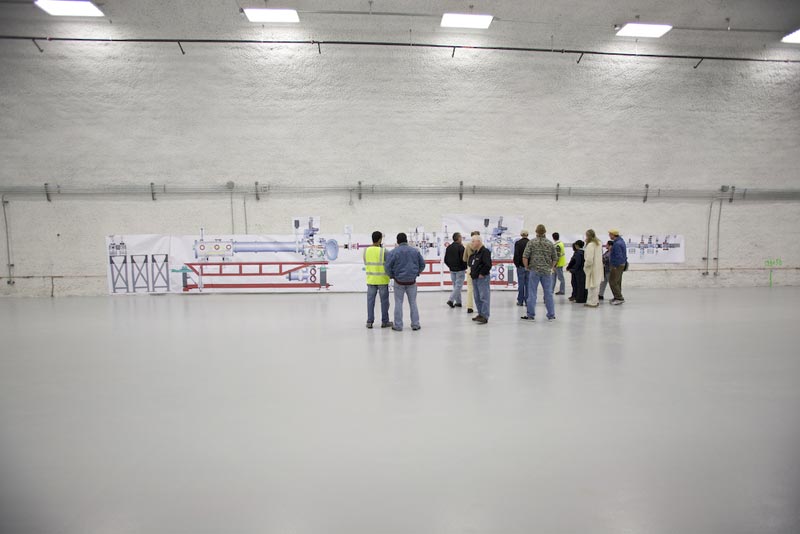
—text by Shawne Workman; photos by Brad Plummer
SLAC Today, December 5, 2008